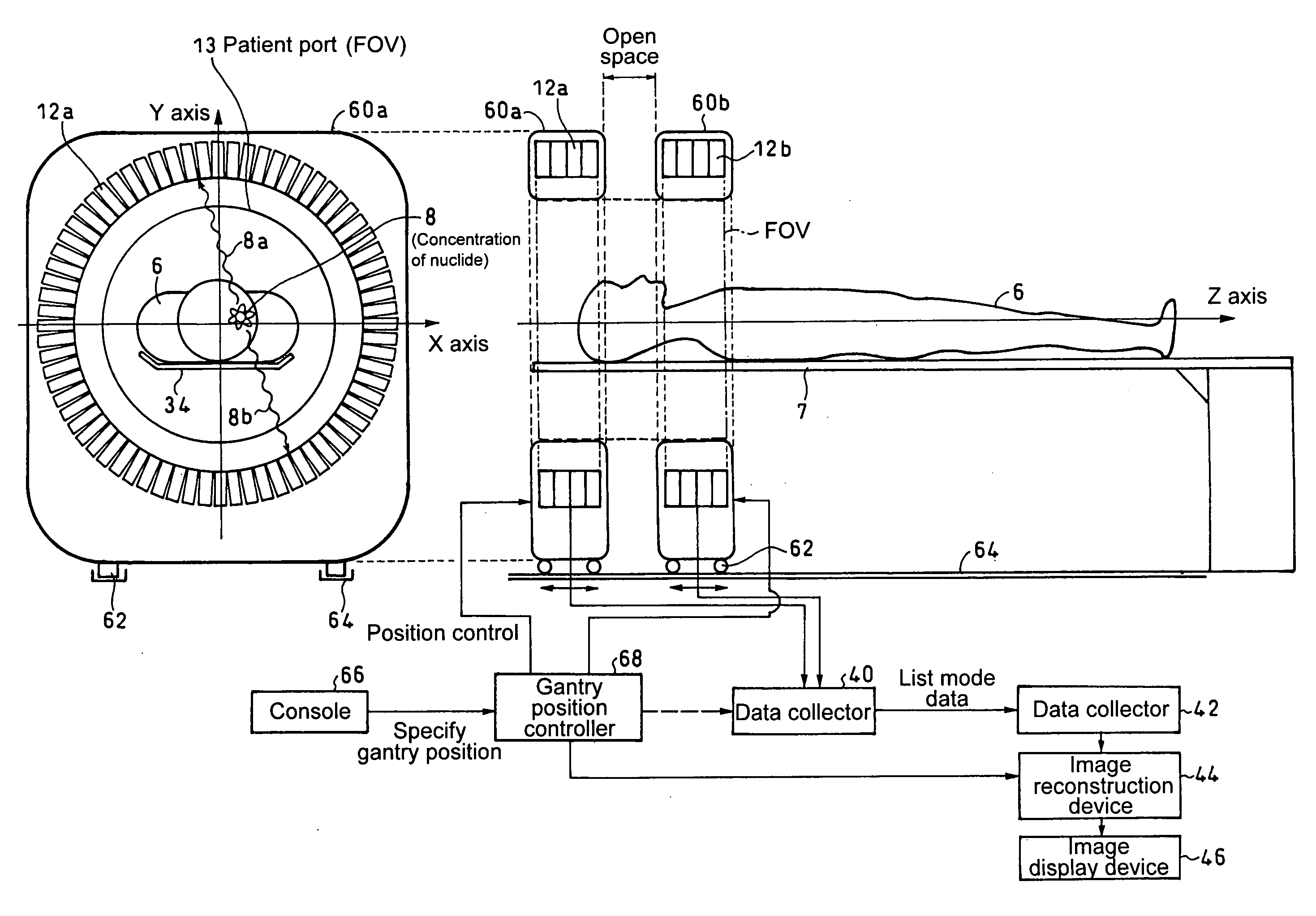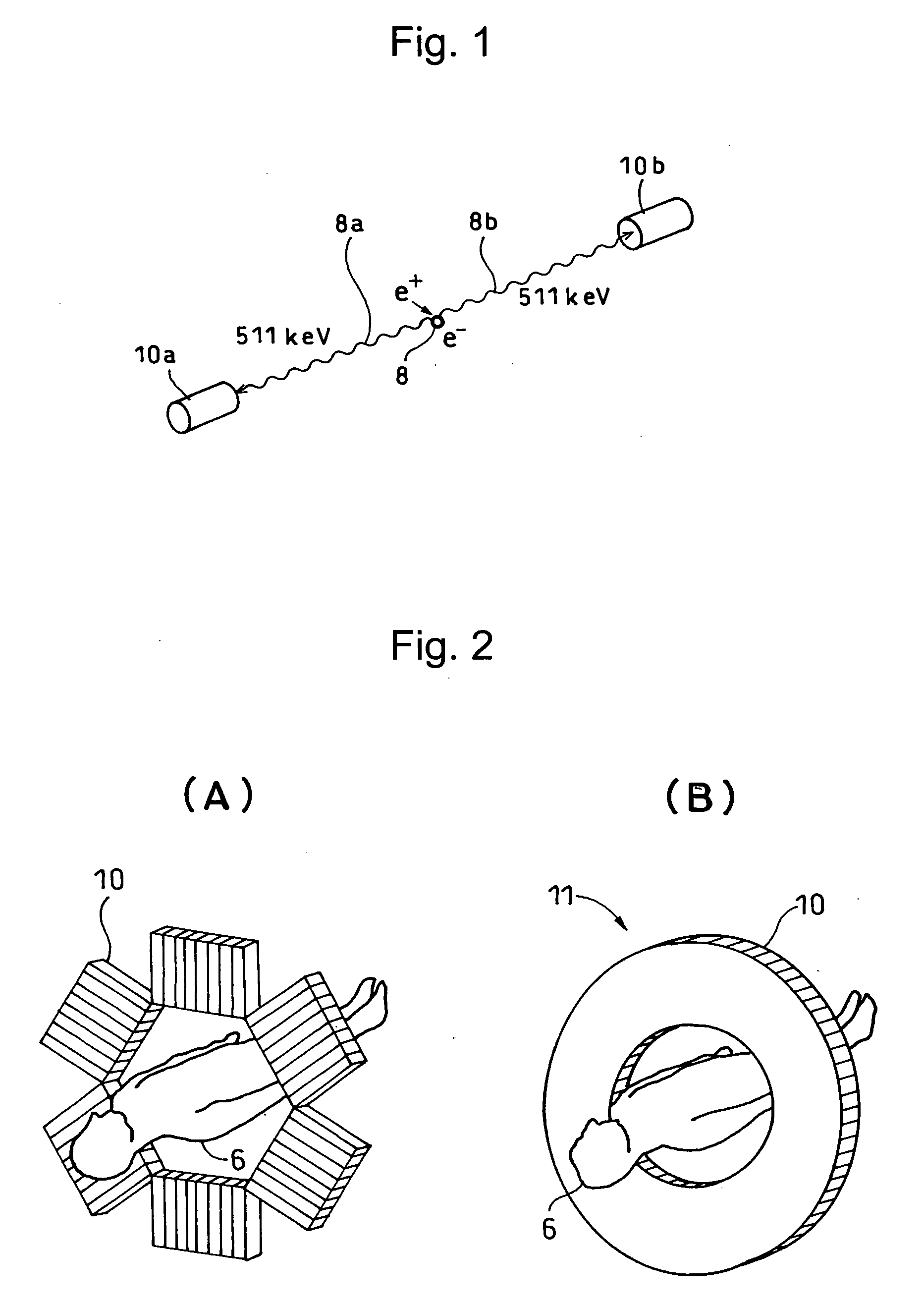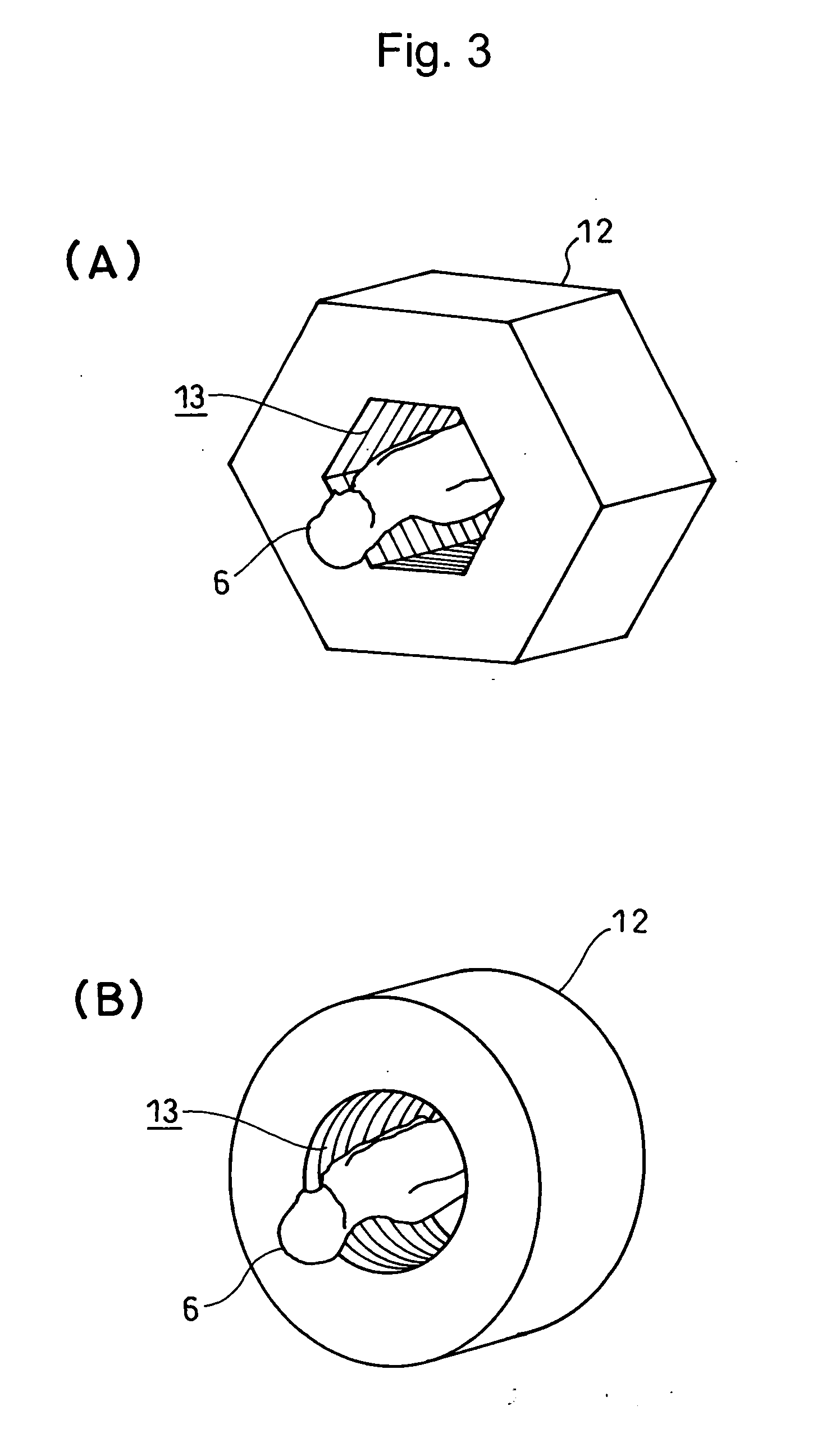Pet scanner and image reconstruction method thereof
a pet scanner and image reconstruction technology, applied in tomography, instruments, nuclear engineering, etc., can solve the problems of difficult to accurately localize a cancer site, difficult to confirm accurately whether irradiation has been performed in accordance with treatment plans or not, and deviations are not easily detected, so as to suppress the deterioration of image quality and easy to gain access
- Summary
- Abstract
- Description
- Claims
- Application Information
AI Technical Summary
Benefits of technology
Problems solved by technology
Method used
Image
Examples
first embodiment
[0073]As shown in FIG. 10, in the present invention, a first detector ring 12a and a second detector ring 12b in which detectors 10 arranged densely or spatially in a ring shape or in a polygonal shape are arranged, with an open space kept in the body axis direction, coincidences are measured for some of or all of detector pairs connecting the first detector ring 12a with the second detector ring 12b to perform three-dimensional image reconstruction, thereby imaging as a tomographic image an open space between the first detector ring 12a and the second detector ring 12b.
[0074]FIG. 11 is a flow chart illustrating processing procedures in a constitution having two detector rings, that is, the detector ring 12a and the detector ring 12b.
[0075]For the sake of explanatory convenience, a region which is imaged as a tomographic image is divided into three regions, that is, a first FOV within the detector ring 12a, a second FOV within the detector ring 12b, and an open space (also referre...
second embodiment
[0084]Next, a description will be given in detail for the present invention by referring to FIG. 16.
[0085]The present embodiment is a PET scanner similar to that of the first embodiment, in which not only coincidences are measured for some of or all of detector pairs connecting a first detector ring 12a and a second detector ring 12b but also coincidences are measured for some of or all of detector pairs within the first detector ring 12a and some of or all of detector pairs within the second detector ring 12b to perform the three-dimensional image reconstruction. Thereby, a continuous region which combines a first FOV of the first detector ring 12a, a second FOV of the second detector ring 12b and an open space is imaged as tomographic images.
[0086]FIG. 17 illustrates procedures for obtaining tomographic images which combine the clearance region, the first FOV and the second FOV in the second embodiment. Coincidences are determined within the detector ring 12a and within the detect...
third embodiment
[0092]In the third embodiment, allowable ranges between the first FOV, the second FOV, and the clearance region can be obtained as illustrated in FIG. 22. Specifically, when the ring diameter of the first detector ring 12a is given as D1, the width of the sensitivity area in the body axis direction is given as W1, the ring diameter of the second detector ring 12b is given as D2, the width of the sensitivity area in the body axis direction is given as W2, and the clearance between detector rings is given as G, following formulae can be used to calculate W, H1 and H2 in the drawing.
W=(D1×W2+D2×W1) / (D1+D2) (1)
H1=D1×(G+W2) / (D1+D2) (2)
H2=D2v(G+W1) / (D1+D2) (3)
[0093]Then, where the relationship of H1>W or H2>W or G>W is satisfied, as illustrated in FIG. 22 (A), a region is developed that is not imaged, by which a FOV in the body axis direction is made discontinuous. Therefore, as illustrated in FIG. 22 (B), in order to secure a FOV which is continuous in the body axis direction, it is n...
PUM
 Login to View More
Login to View More Abstract
Description
Claims
Application Information
 Login to View More
Login to View More - R&D
- Intellectual Property
- Life Sciences
- Materials
- Tech Scout
- Unparalleled Data Quality
- Higher Quality Content
- 60% Fewer Hallucinations
Browse by: Latest US Patents, China's latest patents, Technical Efficacy Thesaurus, Application Domain, Technology Topic, Popular Technical Reports.
© 2025 PatSnap. All rights reserved.Legal|Privacy policy|Modern Slavery Act Transparency Statement|Sitemap|About US| Contact US: help@patsnap.com



